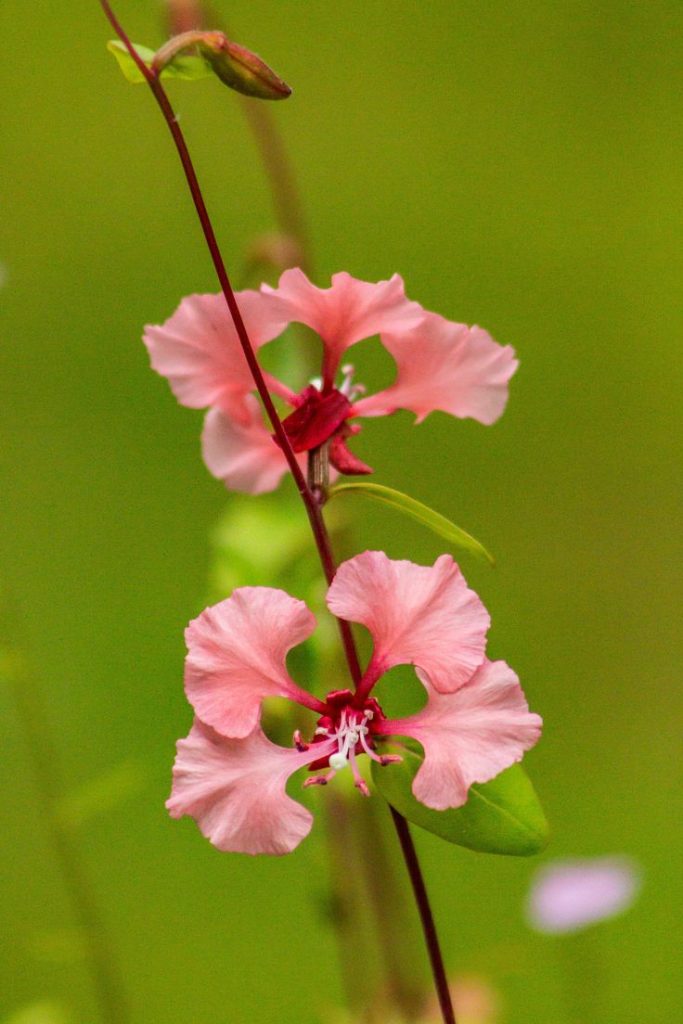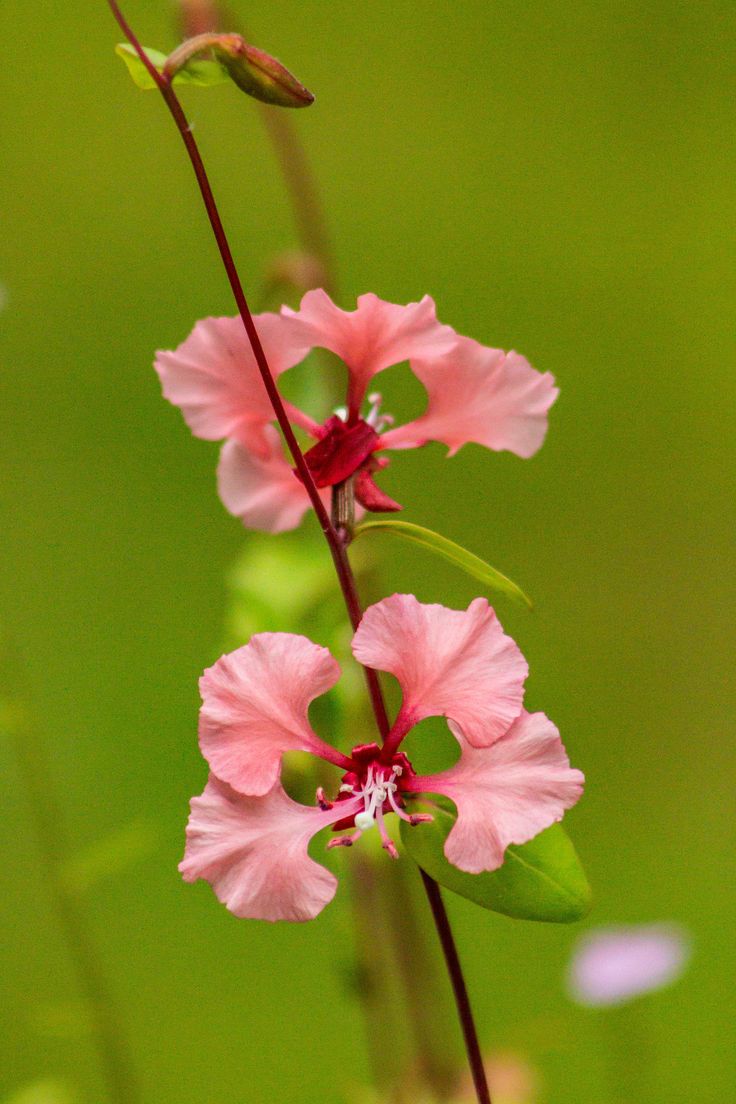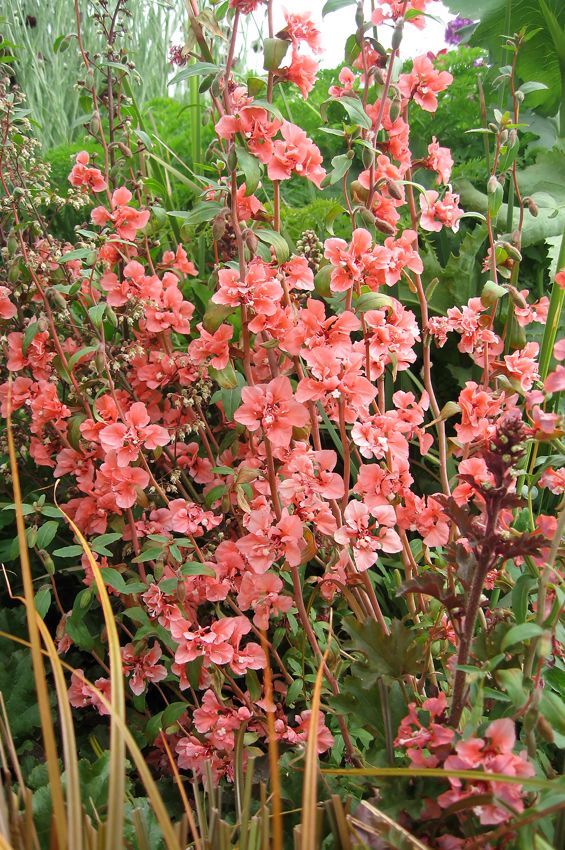Clarkia unguiculata: The Ephemeral Beauty of Clarkia

In the vast landscapes of California, amidst arid deserts and lush sequoia forests, lies a remarkable plant known as Clarkia unguiculata.
This species, belonging to the Onagraceae family, is one of the many Clarkia species found in the western United States.
Commonly known as Elegant Clarkia or Farewell to Spring, this annual plant is appreciated for both its ephemeral beauty and its role in California's ecology.

Botanical Description
Clarkia unguiculata is an annual herbaceous plant that grows to a height of approximately 1 to 3 feet (30 to 90 cm).
Its slender, erect stems branch out at the top, giving rise to several delicate flowers. The leaves are lanceolate and arranged alternately along the stem.
The flowers, which are the most distinctive feature of the plant, emerge in clusters at the ends of the branches.
They have four petals that can range in color from pale pink to deep purple.
Each flower also has an elongated, narrow calyx that surrounds the base of the flower.
Habitat and Distribution
Clarkia unguiculata is native to California and is commonly found in a variety of habitats, from open meadows to mountain slopes and roadside edges.
It prefers well-drained soils and is typically found in open, sunny areas.
This species is endemic to California and is primarily distributed in the coastal and mountainous regions of the state.
Life Cycle and Phenology
As an annual plant, Clarkia unguiculata completes its life cycle within a year.
Seeds germinate in response to the first autumn rains or the onset of spring, depending on the geographic location and local climatic conditions.
The plant grows rapidly and produces flowers in spring or early summer.
The flowers are pollinated by a variety of insects, such as bees and butterflies, which are attracted to their nectar and pollen.
Once pollinated, the flowers give way to elongated seed capsules containing numerous tiny seeds. These capsules split open when the seeds mature, dispersing them by wind to initiate the life cycle anew.
Ecological and Cultural Importance
Clarkia unguiculata plays an important role in California's ecosystems as a source of food and shelter for a variety of organisms.
Its flowers provide nectar and pollen for pollinators, including bees, butterflies, and hummingbirds, contributing to the health and diversity of the insect community.
Additionally, the seeds of Clarkia unguiculata are a food source for a variety of birds and small mammals.
Culturally, Clarkia unguiculata has been admired for its beauty by indigenous inhabitants of California and has been studied by botanists and gardening enthusiasts.
Its presence in California's natural landscapes also makes it an important part of the state's natural heritage.
Conservation and Threats
While Clarkia unguiculata is not considered endangered overall, some populations may be threatened by habitat loss due to urban and agricultural development, as well as climate change.
Conservation of this species and its habitat is important for maintaining biodiversity and ecosystem services in California's ecosystems.

Caring for Clarkia unguiculata
Sunlight
Plant Clarkia unguiculata in an area that receives full sunlight to partial shade. It thrives in bright, sunny conditions.
Watering
Water the plant regularly, keeping the soil consistently moist but not waterlogged. During periods of drought, provide additional water to prevent wilting.
Soil
Use well-draining soil rich in organic matter. Clarkia unguiculata prefers slightly acidic to neutral soil pH.
Fertilization
Apply a balanced, all-purpose fertilizer once a month during the growing season to promote healthy growth and abundant flowering.
Deadheading
Remove spent flowers regularly to encourage continuous blooming throughout the growing season.
Mulching
Apply a layer of organic mulch around the base of the plant to help retain soil moisture and suppress weed growth.
Support
Provide support for taller varieties of Clarkia unguiculata to prevent them from flopping over in strong winds.
By following these care tips, you can enjoy the beauty of Clarkia unguiculata in your garden while supporting local pollinators and enhancing biodiversity in your area.
Leave a Reply
You must be logged in to post a comment.